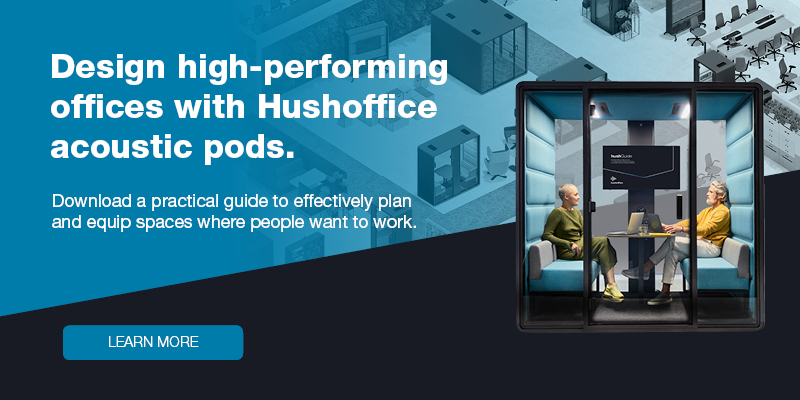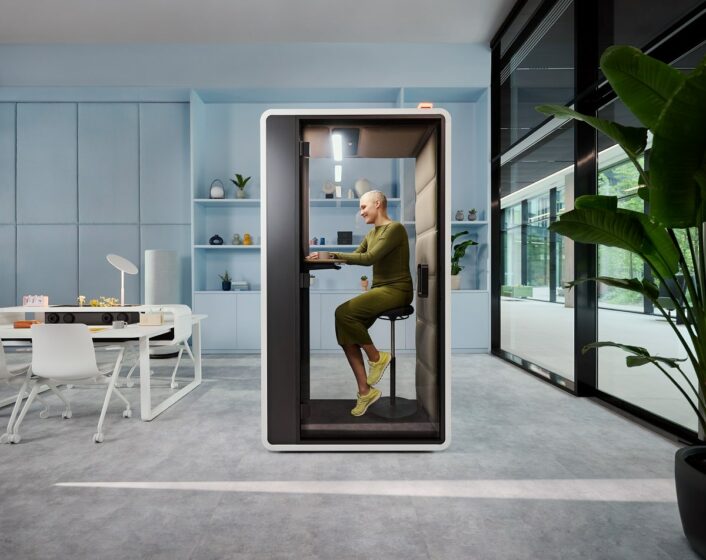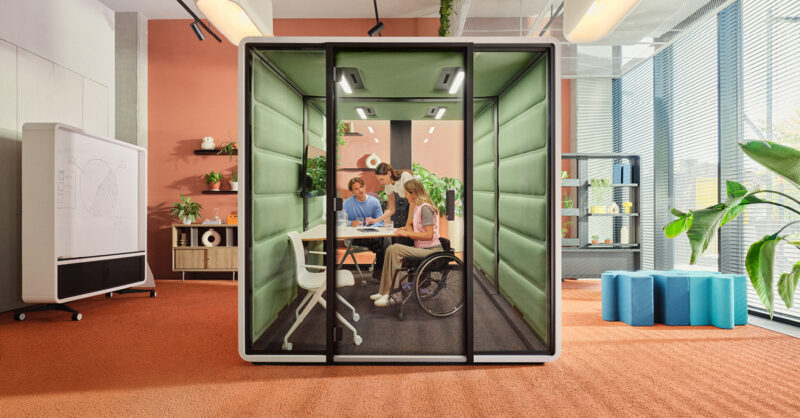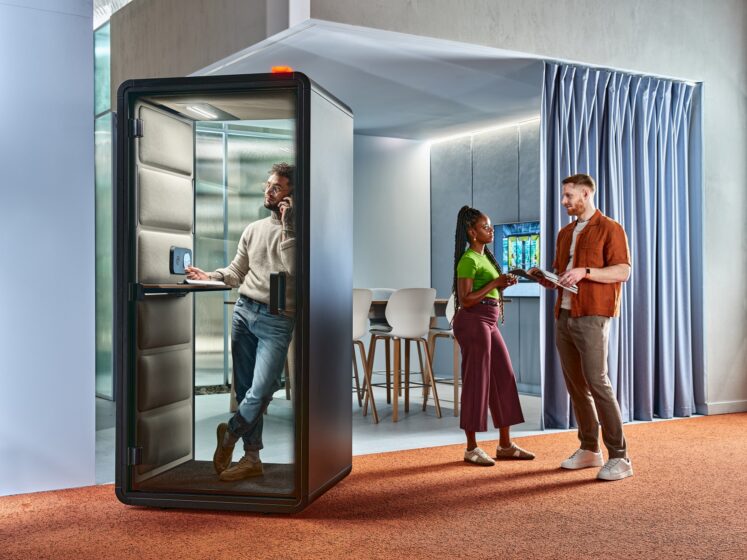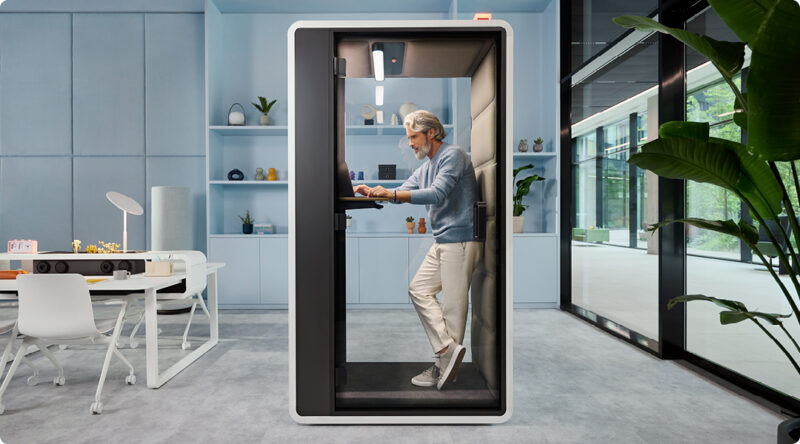Why is an inclusive office a worthwhile investment?
- Posted on: 1 September 2024
- By: Hushoffice Team
Inclusivity is in the spotlight in today’s work environment. How can the design of the workspace help enhance it? Let’s take a closer look.
Inclusive office – tl;dr
- Diversity means attracting workers from various backgrounds, while inclusivity focuses on ensuring that everyone feels appreciated, respected, and recognised.
- Why is it essential to support diversity? It has been shown to enhance innovation. Organisations that demonstrate above-average management diversity boast a 19% higher innovation revenue compared to those with below-average diversity among their leaders. In fact, 96% of management staff now consider diversity and inclusion (D&I) a key objective.
- Cognitive differences, also referred to as neurodiversity, are among the most beneficial kinds of diversity to attract and support, since cognitively diverse teams tend to excel in complex, unpredictable situations. In the workspace, the neuro-inclusive design involves accommodating the diverse sensory and physical needs of employees by including elements such as acoustic booths and wheelchair-accessibility.
What does inclusivity in the work environment refer to?
In an inclusive office environment, all employees experience a sense of belonging and active participation. Such workplaces implement policies and standards designed to provide all individuals with equal opportunities for effective contribution and success, no matter their differences.
How do inclusivity and diversity differ?
Diversity in the workplace means accommodating workers from various backgrounds, such as race, age, or level of disability. Inclusivity, on the other hand, involves creating a work environment where diversity is welcomed, appreciated, and respected.
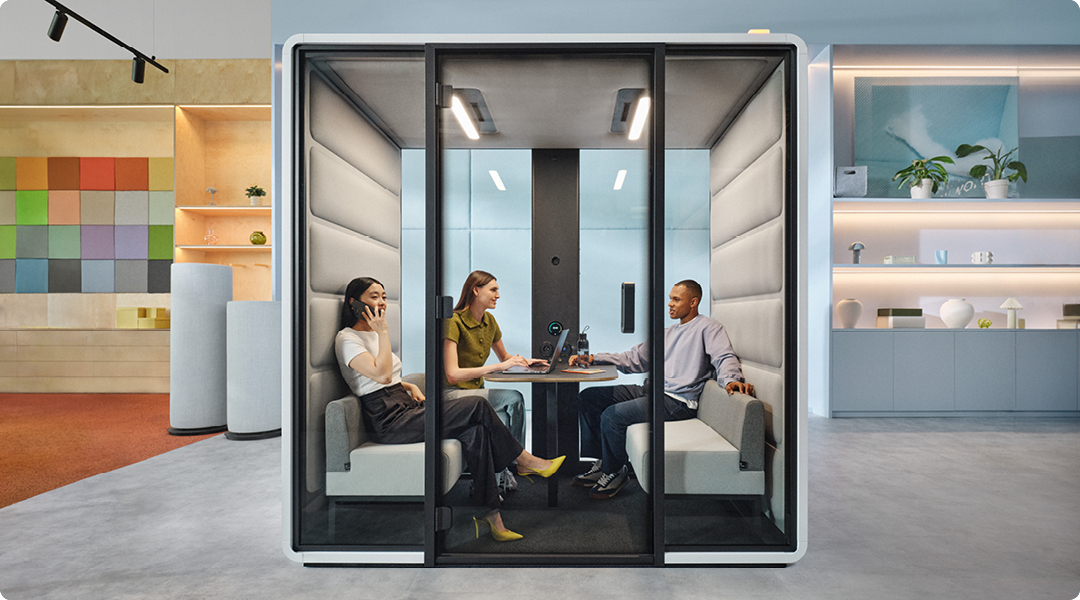
The standards of inclusion can only be established by effective, thoughtful leadership.
Inclusion should start at the top, with managers leading by example. Once they embrace inclusion through their actions and words, they can highlight its importance to others, consistently encouraging individuals to adopt different perspectives, while also catering to various needs and requirements.
Neurodiversity. Neurotypicality. Neuroinclusion. How are these notions related?
Neurodiversity encompasses differences in cognitive functioning, involving conditions such as ADHD, while neurotypicality refers to cognitive functioning that aligns with societal standards. Neuroinclusion means creating workspaces that support neurodiverse individuals by providing features such as hushFree.S work booths.
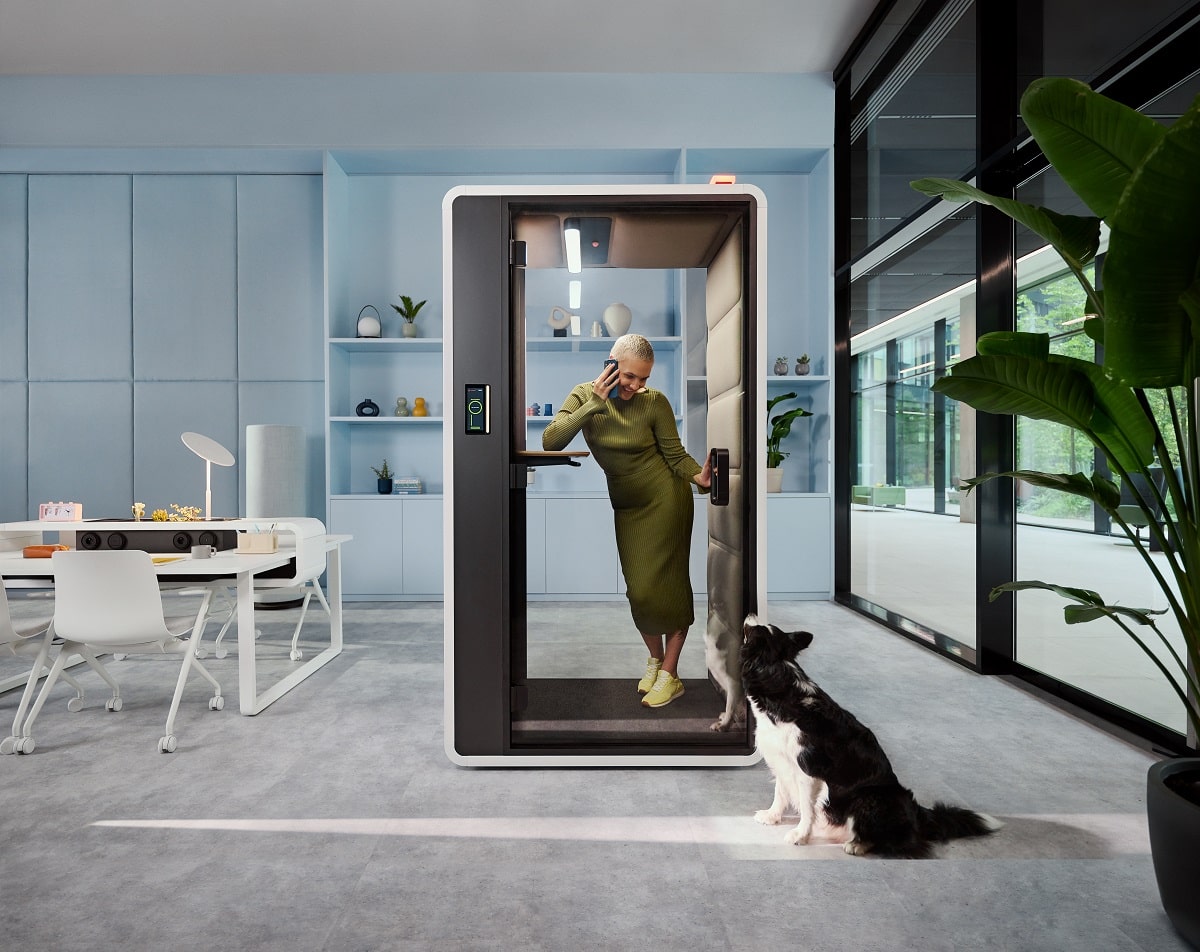
In addition to supporting neurodiverse individuals, neuroinclusion can also empower many historically excluded groups.
While a lively open-plan workspace can trigger anxiety among highly sensitive workers, it may also present significant challenges for individuals with hearing disabilities, or for those who find it particularly difficult to focus in noisy environments due to their specific cultural backgrounds.
Find out more: How to support highly sensitive people (HSPs) in your office
Why is a diversity policy a worthwhile investment for the organisation?
A policy that supports diversity is shown to enhance innovation! It can increase workers’ overall satisfaction and commitment by providing a positive and emotionally secure environment where individuals feel a sense of connection and are highly motivated to succeed. In fact, 96% of leaders consider diversity and inclusion (D&I) to be their top strategic goal.
Diversity fosters innovation.
Diversity brings together a wide range of perspectives. The more varied the mix, the brighter the spark of creativity can shine. When different mindsets come together, individuals are more likely to challenge one another, encouraging them to think outside the box and tackle problems with a more innovative approach.
Cognitively diverse teams deal with problems more effectively.
“Multivariate” teams excel in complex, unpredictable situations. A cognitively diverse and eclectic group may reach the most insightful synthesis due to their varied structure. And they can achieve even better results when gathering in a large office booth, such as hushFree.L, where they can brainstorm fledgling ideas in private.

Inclusivity can act as a talent magnet.
For 83% of Generation Z an organisation’s commitment to D&I is a significant factor in choosing an employer. Indeed, most individuals are willing to work for companies whose values align with their own, with 54% ready to accept a lower salary for that alignment, and 56% stating they would not consider an organisation with different values.
Universal Design (UD) does not equal inclusive design.
While both aim to improve accessibility, their methodologies and scope are different.
User-centred vs. standardised approach
Inclusive design is user-centred as it aims to accommodate the specific needs of various users by providing tailored solutions. In contrast, universal design promotes a more standardised approach that involves creating work environments for everyone to use without any adjustments.
Personalisation vs. generalisation
In inclusive design, solutions are often tailored to specific, often marginalised groups, while universal design focuses on general solutions that are widely accessible and adhere to standards aimed at accommodating the needs of the broadest range of users.
Process vs. result
While inclusive design is regarded as a continuous process based on regular user feedback and iteration, universal design aims to create an ideal work environment accessible to everyone from the start.
If your goal is to create a workspace that works for everyone, make adaptability your top priority.
Accessible and mobile furniture allows you to tailor the space to accommodate various employee needs, enabling workers to modify their workstations for optimal ergonomics and adapt each setup to various work styles, from collaborative tasks to focused work.
Apply understanding to office design to create empathetic architecture.
By following inclusive design principles, we can weave empathy into the very fabric of the workspace. Every morning workers feel at ease entering a welcoming reception area. A wheelchair-accessible office booth, such as hushFree.Access.M, is strategically located and ready for use. A key feature of this essential space ensures that every urgent call will be taken in a private and comfortable environment while also eliminating the physical barriers with its no-threshold flooring and an accessible door handle. During the workday another employee – an introverted creative overwhelmed by the office hubbub – enters a private meeting booth, such as hushFree.Access.L, to find peace and calm down. The booth serves as a safe, quiet retreat that everyone can use freely. And that’s the point: empathetic architecture is about thoughtfully designed, inclusive spaces that promote employee well-being in every aspect
– says Mateusz Barczyk, Senior Brand Manager, Hushoffice.
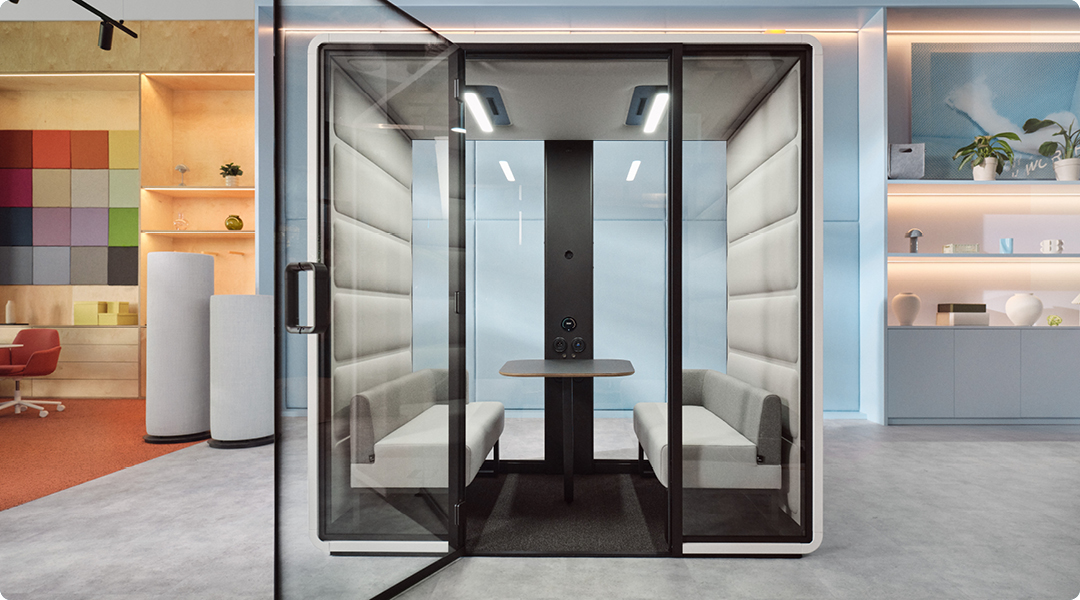
By embracing the feelings, experiences, and sensory needs of various individuals who interact with different elements of the workspace, architects and designers can make more thoughtful decisions and promptly address users’ needs.
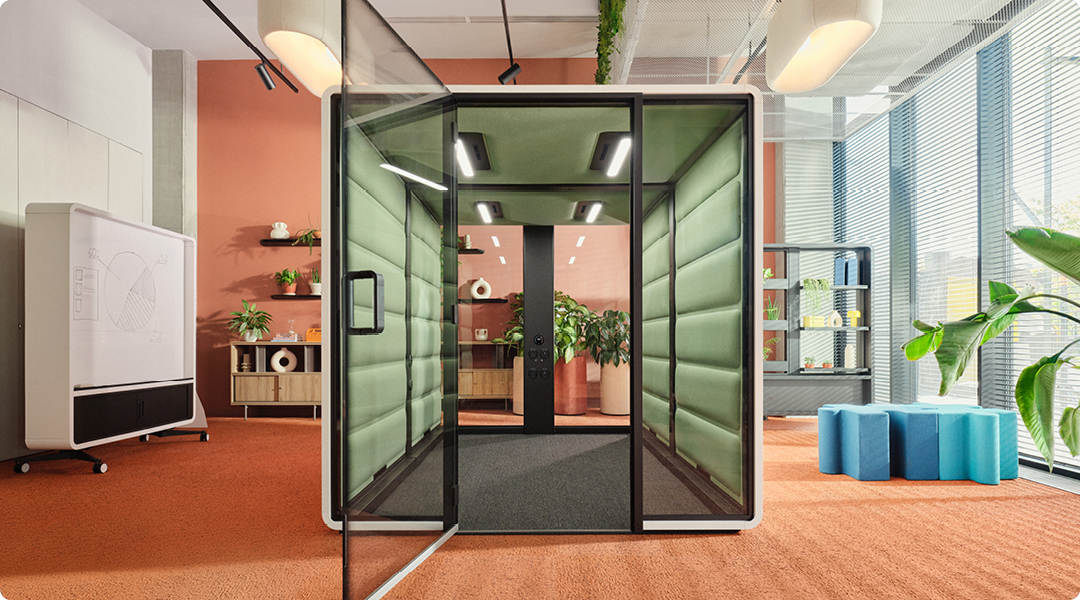
Find out more: Get accessible with hushFree pods.
Spatial openness fosters communicative openness by eliminating barriers.
There are many practical solutions to promote transparency in the office, including anonymous feedback, open online forums, collaborative teams, and workshops (effective means to address silos). The following research-based information can help you consider the next step towards enhanced communication:
- Studies indicate that silos are a key obstacle to effective collaboration.
- To encourage cross-silo collaboration, consider employing cultural brokers – professionals whose responsibility is to bring together different groups. They can do this by promoting open, unbiased discussions that provide better insight into others’ mindsets and expand employees’ perspectives to include remote networks.
- 83% of digitally maturing organisations rely on cross-functional teams, compared to 71% of developing organisations and 55% of companies at a preliminary stage.
Proximity can strengthen team spirit and enhance inclusion.
Did you know that simply sitting in close to a high-performer may boost your own performance? Being in proximity to other team members truly streamlines collaboration by providing more opportunities to connect. Additionally, proximity has been shown to enhance the quality and quantity of interactions essential for effective problem-solving.
– says Mateusz Barczyk, Senior Brand Manager, Hushoffice.Proximity is a significant element to consider while enhancing workspace transparency, ensuring that everybody feels heard. Obviously, sitting next to colleagues strengthens bonds between individuals through shared relational energy. It fosters spontaneous conversations and idea-sharing. More efficient problem-solving. These interactions are natural when your teammates are nearby. Spending more time together leads to clearer, barrier-free communication as we naturally feel closer to and trusting of people we spend time with. The concept behind our hushSpot coworking bench is proximity that fosters togetherness. This modular solution is equipped with useful features, such as sockets, task lighting, accessory organisers, and extra dividers. The table encourages focused, well-organised teamwork, enhancing the sense of unity and connection that drives successful collaborative work
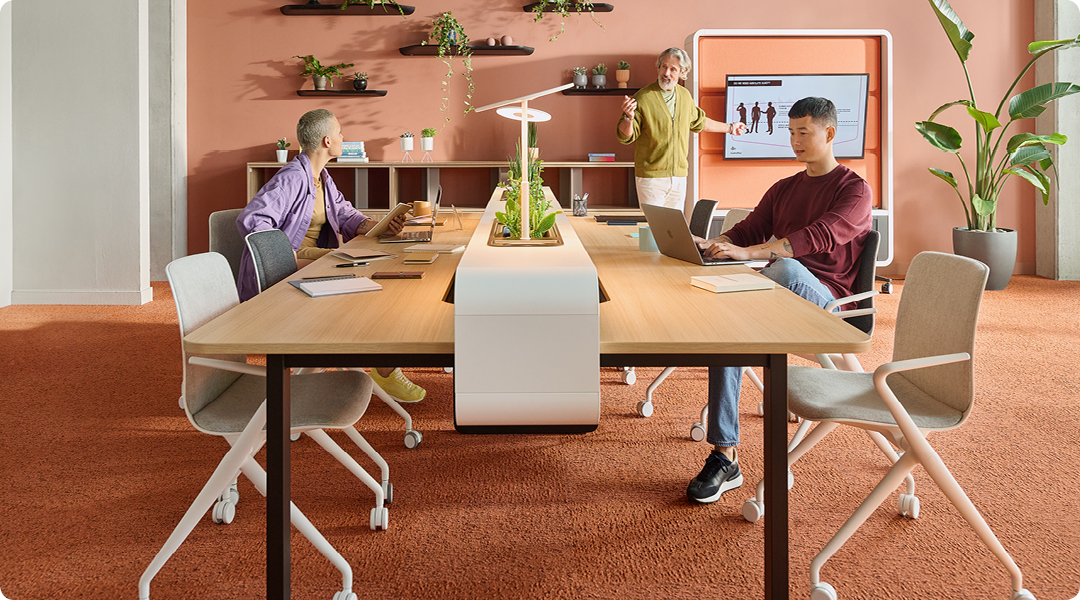
Even small improvements in accessibility can significantly boost inclusion in the workspace.
There are numerous opportunities to enhance accessibility in the office, even at seemingly insignificant interaction points. Consider the following list for guidance:
- Ergonomic furnishings and supportive elements, including sit-stand desks, user-adjustable chairs, monitor risers, external keyboards
- Supportive software, such as screen readers, voice-to-text and text-to-speech software, and speech recognition software
- Closed captioning and real-time transcription for video conferencing
- Smart office design, including voice-activated features, automated door openings, and speech activated lift controls
- Desktop and mobile stand-alone office dividers, such as hushWall, allowing workers to create an enclosed workspace in no time
- Interactive wayfinding kiosks equipped with audio assistance, tactile maps, and mobile applications enhancing the wayfinding experience
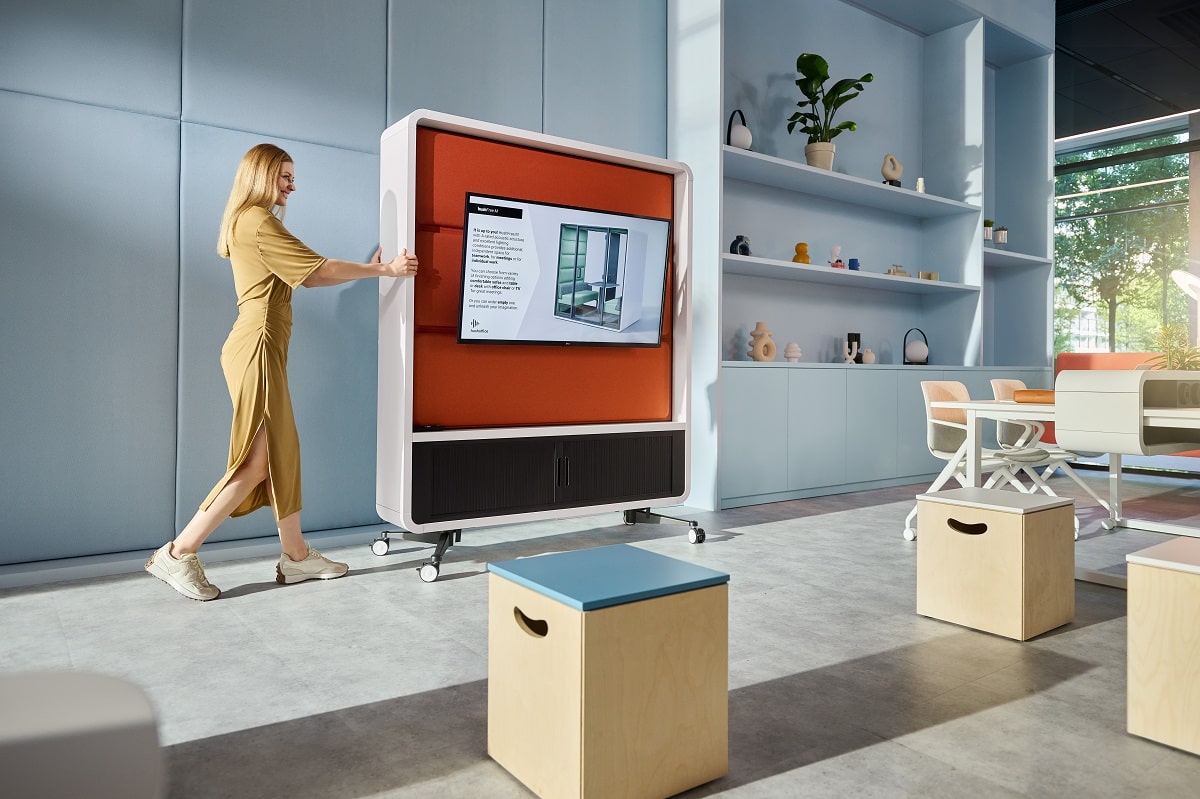
Acoustic booths are part and parcel of an inclusive workspace.
Office booths provide calm, controlled work environments, catering to individuals with sensory sensitivities as well as those who seek privacy. By addressing diverse needs, they can support various work styles and eliminate barriers for workers who feel overwhelmed by noisy, overstimulating environments.
Eliminating barriers while maximising the strengths of neurodivergent individuals.
Neurodivergent workers have a unique need for both sensory and mental comfort. For this group, private, quiet office booths are crucial spaces for regeneration. Equipped with acoustic and visual separation, these booths can offer sensory relief by minimising stimuli and allowing employees to get anchored when they become overwhelmed.
Office booths, such as hushFree.M, are acoustically-designed havens that minimise sensory overload.
In fact, experiencing auditory overload can lead to increased sensitivity to noise, resulting in a vicious circle of stress. That’s why access to calm spaces, such as pods and booths, is essential in open-plan layouts. Pods and booths are calm amidst the storm, providing the peaceful environments necessary to maintain harmony.
– says Mateusz Barczyk, Senior Brand Manager, Hushoffice.Apart from sensory considerations, physical accessibility is one of the most significant elements of empathetic office design. It allows all employees, regardless of their physical abilities, to utilise and navigate the workspace with ease. According to the principles of empathetic office design, inclusivity begins with removing barriers and any elements that prevent individuals from fully participating in their workspace. Incorporating features like ramps, wide doorways, tactile maps, and accessible toilets creates spaces that are both functional and inviting, respecting the needs of all. Thus, we are delighted to introduce two new accessibility booths: hushFree.Access.M, which seats up to four individuals, and hushFree.Access.L, which accommodates up to six users. Both are wheelchair-accessible, fully-equipped work and meeting spaces designed for dynamic collaborative environments
Inclusive office – summary
- Diversity means attracting workers from various backgrounds, while inclusivity focuses on ensuring that everyone feels appreciated, respected, and recognised.
- Why is it essential to support diversity? It has been shown to enhance innovation. Organisations that demonstrate above-average management diversity boast a 19% higher innovation revenue compared to those with below-average diversity among their leaders. In fact, 96% of management staff now consider diversity and inclusion (D&I) a key objective.
- Cognitive differences, also referred to as neurodiversity, are among the most beneficial kinds of diversity to attract and support, since cognitively diverse teams tend to excel in complex, unpredictable situations. In the workspace, the neuro-inclusive design involves accommodating the diverse sensory and physical needs of employees by including elements such as acoustic booths and wheelchair-accessibility.
Hushoffice Frequently Asked Questions
Why does proximity matter in the office environment?
Close collaboration fosters stronger bonds. Essentially, it allows team members to share ideas freely and provide instant feedback, creating a spontaneous and dynamic collaborative environment.
What is the relationship between neurodiversity and neurotypicality?
Neurodiversity describes the differences in people’s cognitive functioning, including conditions such as autism, ADHD, and dyslexia, while neurotypicality refers to cognitive functioning that adheres to societal standards. This plays a significant role in office design as many workspaces are designed to align with the needs of neurotypical workers. A perfect example are open offices, which, if not equipped with work booths, fail to meet the requirements of sensory-sensitive individuals.
How do silos affect organisational transparency?
Studies show that silos are a key obstacle to collaboration. To address this issue, cross-silo teamwork should be encouraged. It might be beneficial to employ cultural brokers and allow space for open, unbiased discussions. Additionally, fostering spatial openness by providing benching desks, such as hushSpot, can physically streamline communication and connection between teams. Such practices are adopted by 83% of digitally maturing organisations, which rely on cross-functional teams more successfully than less mature companies.

